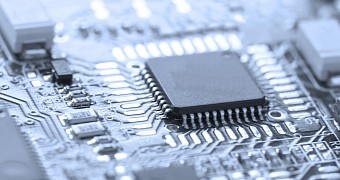It seems that repeating patterns in complex biological networks can now be found hundreds of times faster using an algorithm that exploits the parallel computing capacity of modern graphics adapters.
The discovery made by A*STAR (Agency for Science, Technology and Research) in Singapore stipulates that parallel processing using the microprocessors in modern computer graphics adapters can greatly increase the speed of motif discovery at relatively low cost. In other words, it opens the possibility of rapid genome scans for discrete molecular structures.
To exemplify one form of molecular structures, there's the network motif that can be found in the Escherichia coli bacteria that appears as a negative auto-regulation. Auto-regulation processes are essential biological functions, according to A*STAR researchers, so finding and discovering such repeating "graphs" is considered to be highly important.
However, looking for such patterns is a significant computational drain, and increasing the rate of motif discovery is a serious mathematical challenge. It seems that even the latest, most powerful graphics solutions these days require many days to pinpoint motifs from networks with just a few thousand vertices.
The more processing cores a GPU will have, the faster will they find essential patterns
However, the only chance for researchers to localize network motifs is via search algorithms powered by the latest GPUs available, the likes of NVIDIA's Quadro or AMD's FirePro with thousands of processing cores, allowing the A*STAR scientists to adapt a large number of computational tasks involved in network motif graphs mining.
The GPUs use a parallelized code that includes simultaneous executions of code on multiple GPU cores and efficient memory access patterns. Armed with the newest tech available, the team was able to expedite the search by up to 100 times. The improved rate of graph finding was confirmed through multiple experiments on a variety of biological networks.
Another reason to use GPUs instead of equivalently powerful CPUs is their obvious price. According to phys.org, nowadays a CPU just as powerful as a GPU is 20 times more expensive, hindering the financial scope of large projects where money isn't always a limitless commodity.

 14 DAY TRIAL //
14 DAY TRIAL //